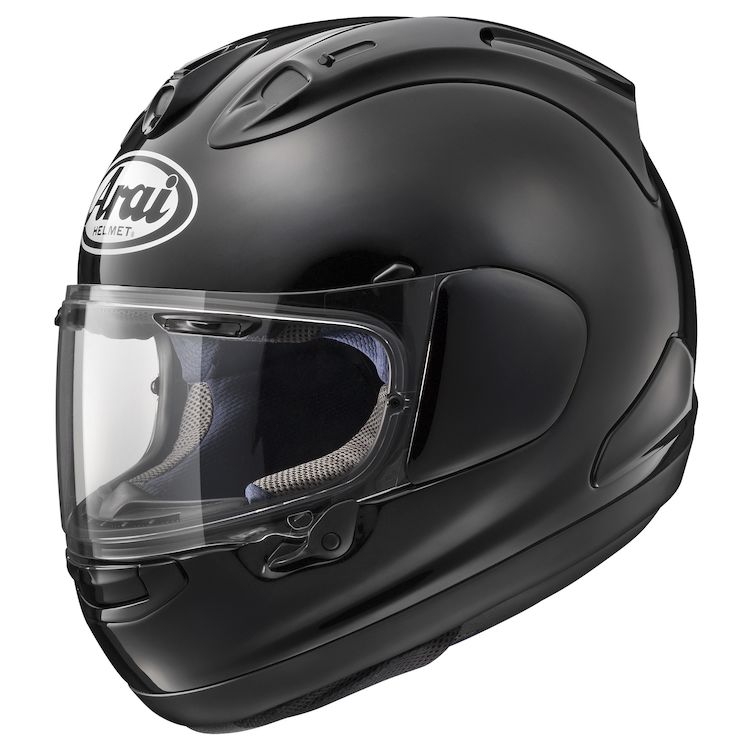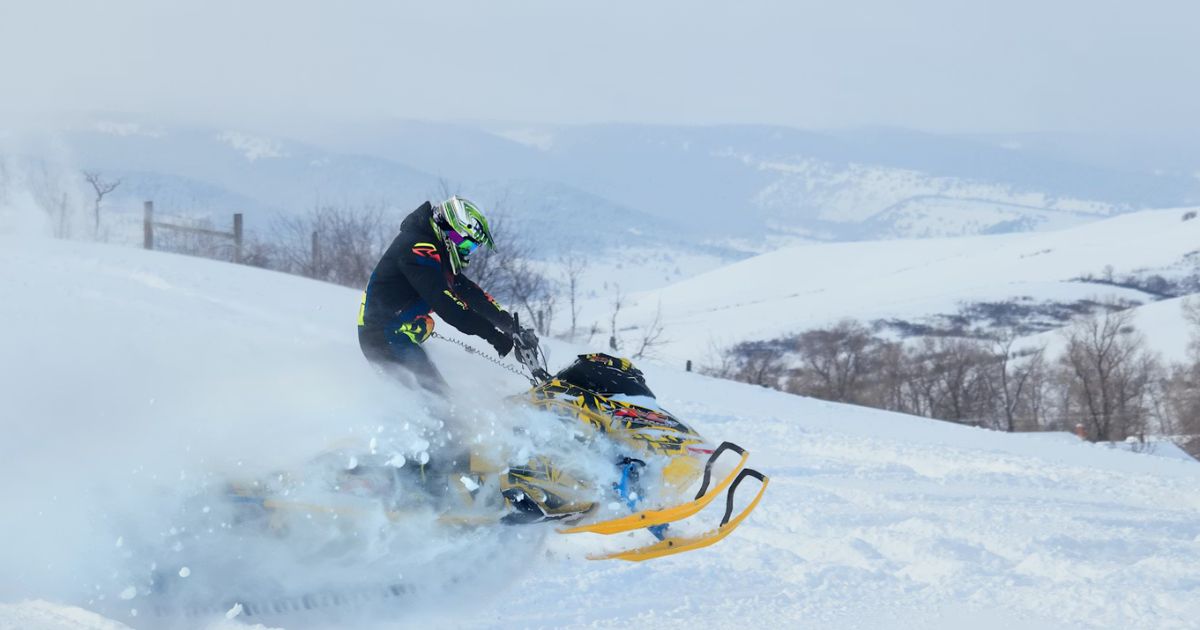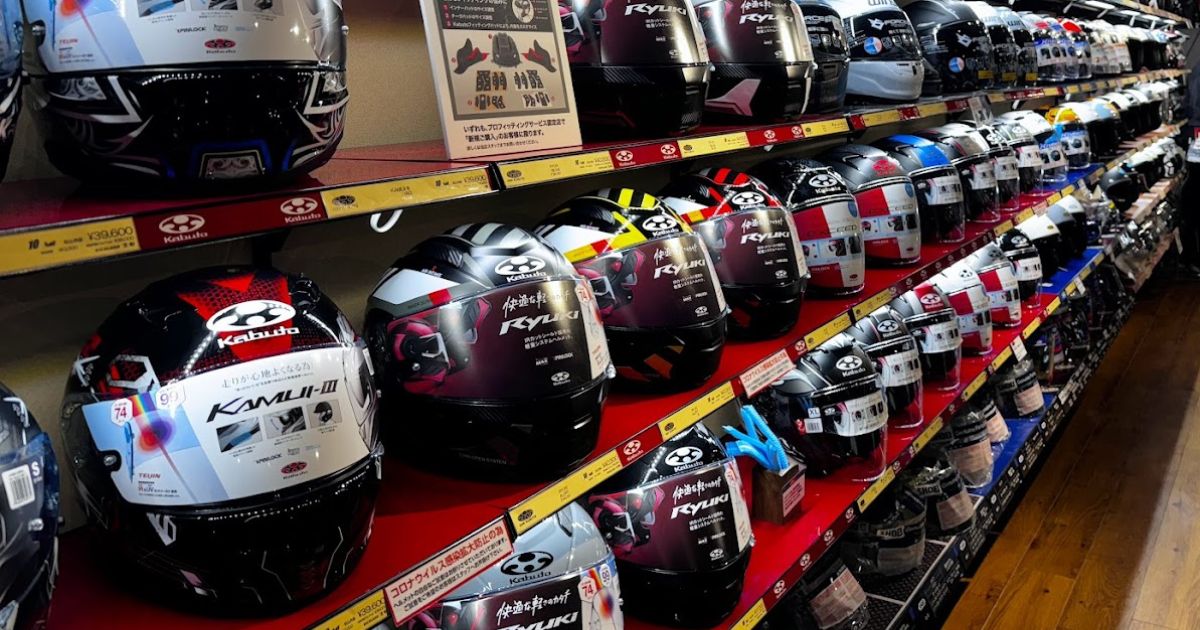
Motorcycle Helmet Safety Beyond the Basics: My Crash Story
left for contents
Today I’ve got the Arai Corsair X in front of me. I want to walk you through why this helmet isn’t just good—it’s life-saving. I’m also going to show you the exact one that saved my head when I was hit by a car from behind. Thrown into the air, face-first into the ground. And you know what? I walked away.
This helmet saved my life.
This article is based on the video by HardCity RainDrops.
A Helmet Is Not the Place to Save Money
Elizabeth Wanderers sent me this new Corsair X, and while I appreciate it more than I can say, I told her I’d pay her back. I just couldn’t accept another helmet in good conscience. Most people don’t have someone who sends them a $1000 helmet, and I know how fortunate I am.
But guys, you cannot put a price on your head.
I know some of you are thinking: I’ll just get a budget helmet now, and upgrade later. No. You need to flip that thinking. Get the good helmet now, and get the bike later. I had this Corsair X before I even had a new bike. Why? Because your head is everything.
Top-tier racing helmet with premium safety, ventilation, and comfort.
- Superior impact protection with PB SNC2 shell
- Excellent ventilation with adjustable diffuser system
- Wide, clear view with Pinlock-ready VAS shield
- High price point compared to competitors
The Difference Between Good and Just… Helmet-Shaped
Here’s the HJC I-10. It’s under $200, DOT-rated. But DOT is so outdated it’s almost irrelevant. It doesn’t have ECE or any of the advanced certifications you want.
The biggest red flag? The construction. There’s no thick rubber base, which I’ll explain later. The shape is jagged with pointy parts—those can catch on the ground in a slide, twist your neck, or rip the helmet off entirely.
Before I knew better, I glued a GoPro mount to that HJC helmet. I’ve kept it on there to show you: never do this. A glued-on mount becomes a hook during a slide. It can catch on the asphalt and snap your neck. I’m serious. That one little mistake can become a fatal one.
I’m not saying this HJC is totally useless. If it’s all you’ve got—wear it. But I wouldn’t trust it in a real crash. Not after experiencing what a real helmet like the Corsair X can do.
What Makes the Arai Corsair X So Special?
There are other great helmets out there—Shoei RF-1200 and RF-1400, the AGV Pistas, HJC’s high-end Alpha series. But for me? After this crash, I’m sticking with the Corsair X. No switching. It saved me, and I can’t imagine using anything else.
The beauty of this helmet isn’t just the graphics or the finish—it’s the engineering. It’s clean. It’s round. Even the scoops are designed to break off during impact so they don’t catch.
Then there’s that big thick rubber ring at the bottom. That thing isn’t just a bumper. It’s a crash energy absorber. Its whole job is to take the force of an impact and keep it from transferring to your neck.
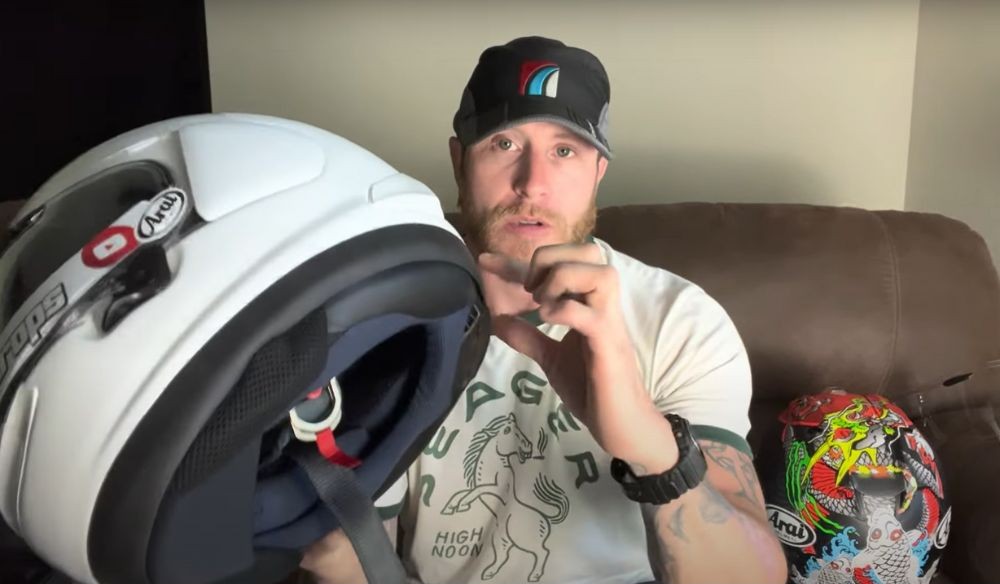
The Corsair X is egg-shaped on purpose. That helps it slide across pavement instead of catching and whipping your head. And when Arai helmets crash? You don’t see fiberglass flying off. You don’t see them shattered. You might find a crack, maybe some spiderweb damage—but they stay together.
That’s the point. The helmet absorbs and distributes energy instead of breaking apart. It’s a one-and-done like a baby car seat, sure—but it does the job when it matters most.
The Crash: What It Felt Like
Now let me take you back to the moment of impact. I blacked out for maybe half a second. In that half second, I remember seeing the sky and thinking, “I don’t have a ladder—how am I gonna get up there?”
And then I woke up. I was alive. I could feel my face sliding across the pavement, but the visor stayed locked. Everything worked. In five seconds, my life changed—and this helmet did what it was designed to do.
Could you imagine if I wasn’t wearing it? That would’ve been a broken jaw, missing teeth, road rash all over my face. Not a good day.
Ventilation That Actually Works
You’ve got vents everywhere—chin, forehead, sides, back. You’ve even got eyebrow vents built into the visor, and they all work. They cool your head, help you focus, and prevent fatigue.
You can open or close everything even with gloves on. And yeah, it gets a little loud on the highway—but that’s the trade-off when you want real airflow.
The Details That Matter
Let’s not forget the strap system—double D-ring all the way. It’s not fancy, but it’s safe. Even if it comes loose, the design makes it hard for the strap to come out.
You loop it through the two rings, pull it back through one, and then secure it. It’s simple, effective, and been trusted for decades. I’m not switching to a magnet setup just because it’s trendy.
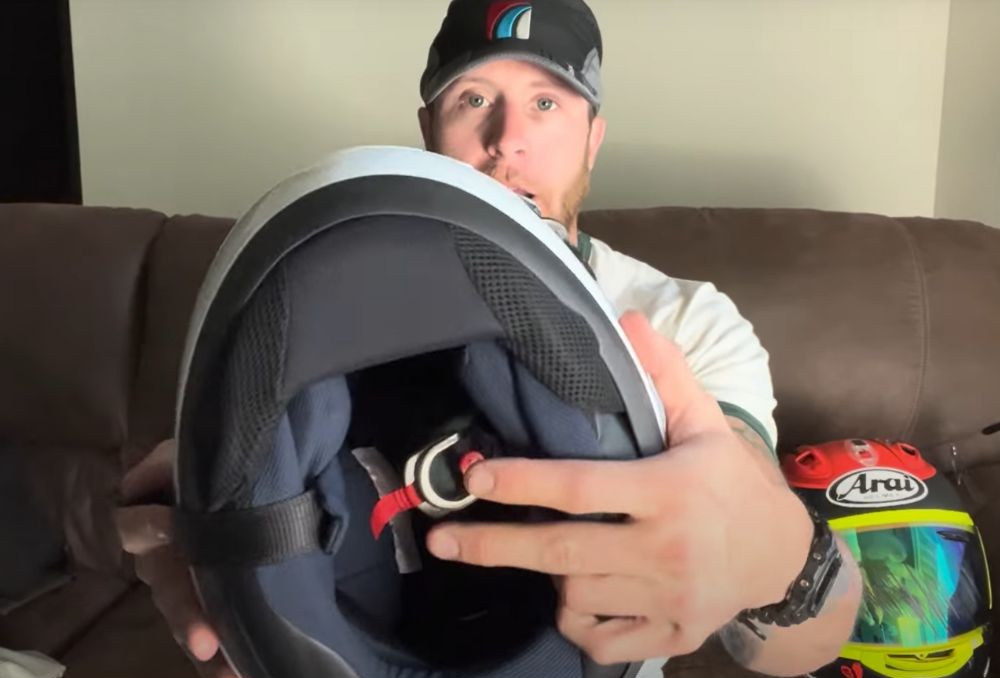
It comes with a Pinlock visor—amazing anti-fog tech. But remember, you’re not supposed to wear Pinlock at night. Good thing I’ve got a spare visor without it now.
The locking mechanism? Legit. You can pop it open for ventilation, close it to seal, or lock it in place so it won’t fly up in a crash. That lock is not just for wind—it’s a crash feature.
Swapping the Visor: Easier Than You Think
Want to take off the visor? Just lift it, press in the two side tabs with arrows, and the visor pops right off. To put it back in, line it up with the orange slots, click it in, and you’re done.
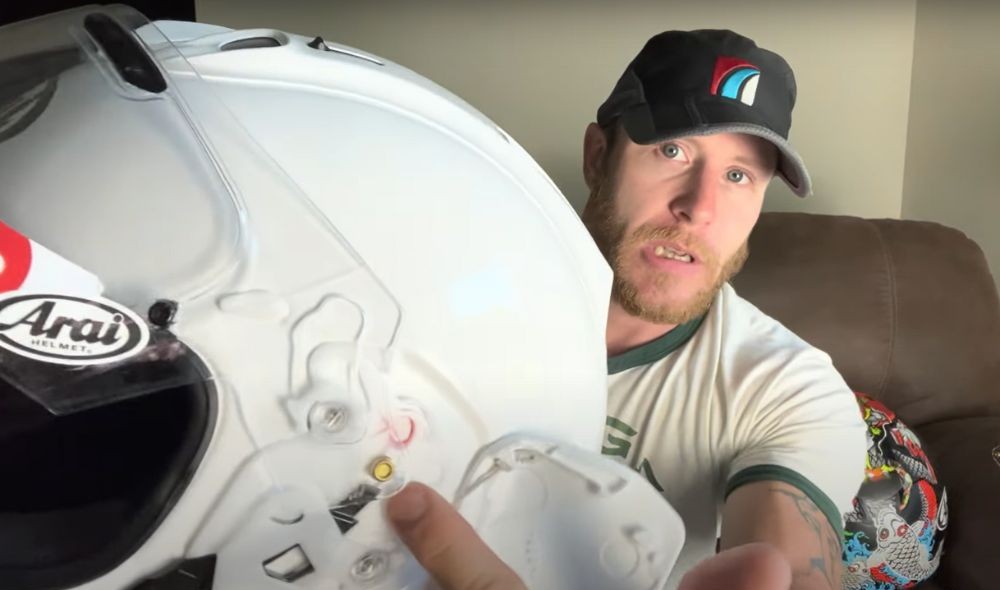
Pro tip: Always test the mechanism a few times after putting the visor back. Arai even sends a little tube of silicone to reduce friction where the visor meets the helmet.
Comfort and Fit: Where It All Comes Together
The interior padding is unreal. Plush, snug, breathable—and replaceable. The cheek pads snap in and out, and you can adjust internal foam layers for a custom fit.
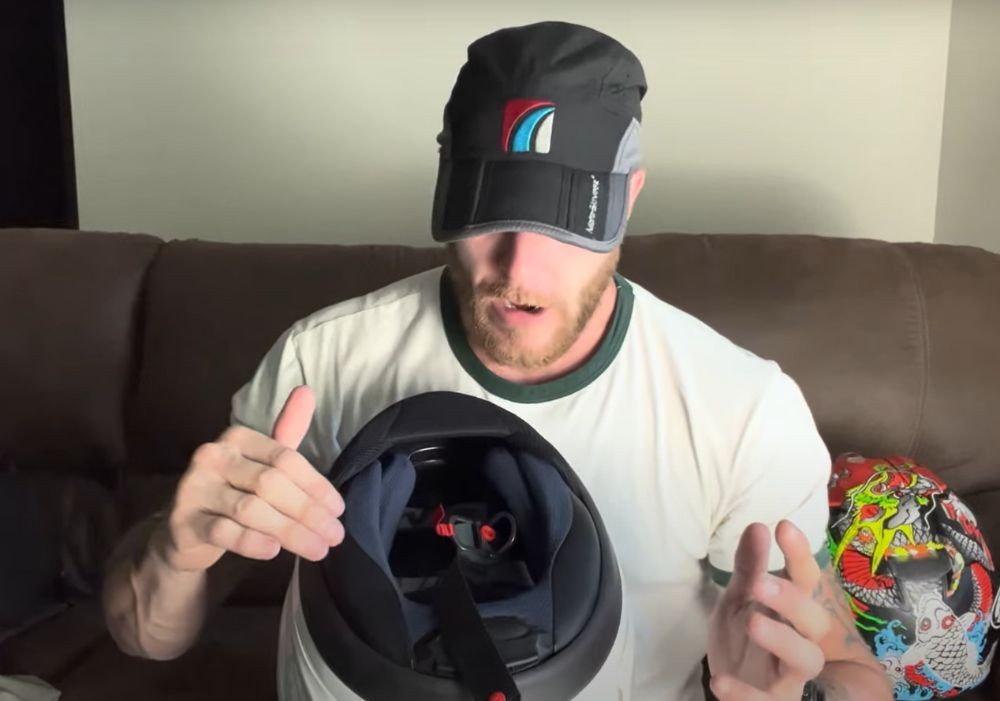
That tight neck roll? That’s not just for wind noise. It secures the helmet to your head, helps it stay put in a crash. Inside there’s a contour ridge that cups the base of your skull. You feel it lock in. It feels secure.
Arai doesn’t want you sticking things on their visors for a reason—vision safety. But I mounted my GoPro low, outside the field of view, and I think it looks sick.
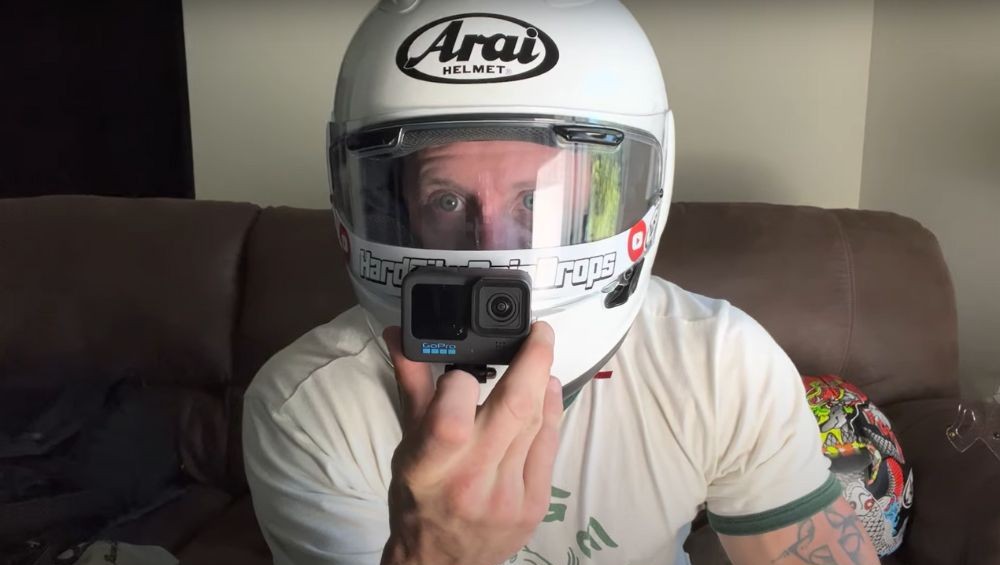
The all-white? It’s symbolic. An angel sent me this. And honestly, it’s clean, timeless, and it’ll match any bike I end up with.
Why I’m Still Here
After the crash, doctors ran every scan you can think of. X-rays, CAT scans—they were convinced I had fractures. But I didn’t. No spine injury. No head trauma. No concussion. Not even blood in the ears.
Yeah, part of that is luck. But part of that is this helmet doing its job.
The cracks are spread out, not blown out. The shell absorbed energy evenly. That’s what you want. It’s hard to put into words how thankful I am.
Thank You, Liz
Liz, thank you. Again and again. You saved my life. I know paying you back for this helmet doesn’t even scratch the surface of what that means, but it’s something.
Could you imagine if I was wearing that other helmet—with the glued-on mount? I don’t even know if it would’ve stayed on my head.
Always Check Your Strap
Last tip: double, triple check your strap. Even with a D-ring system, don’t be lazy. If it’s not buckled right—pull over and fix it. It’s not worth the risk.
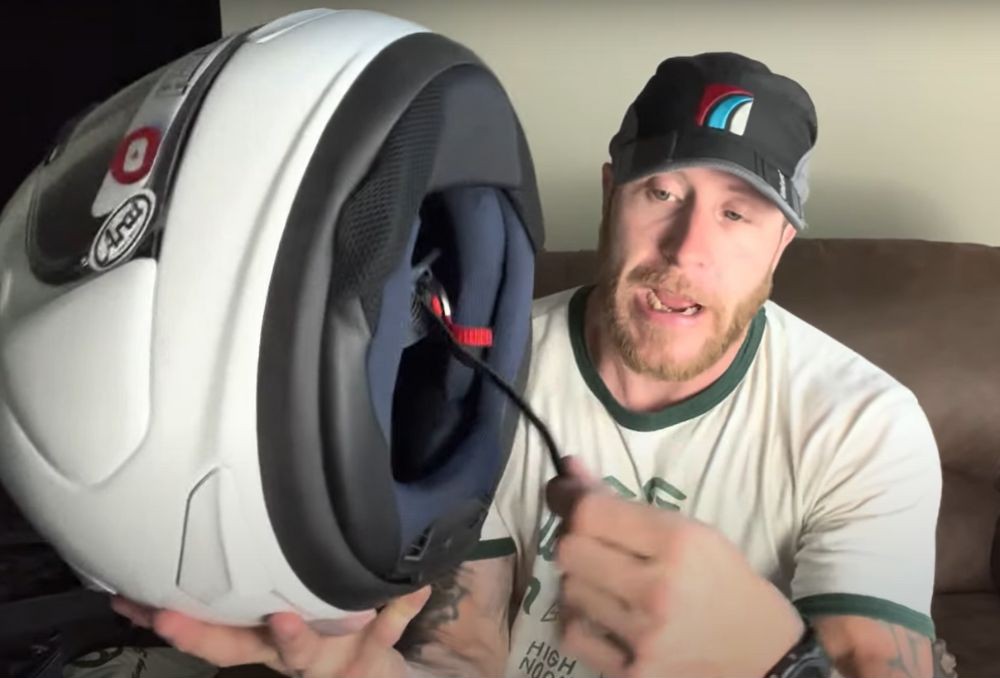
If there’s anything you take from this—it’s that you can’t put a price on your head. Take your helmet seriously. Make sure it fits, make sure it’s strapped, and make sure it’s the right one for you.
That’s it for today, guys. Ride safe.
Top-tier racing helmet with premium safety, ventilation, and comfort.
- Superior impact protection with PB SNC2 shell
- Excellent ventilation with adjustable diffuser system
- Wide, clear view with Pinlock-ready VAS shield
- High price point compared to competitors
Related
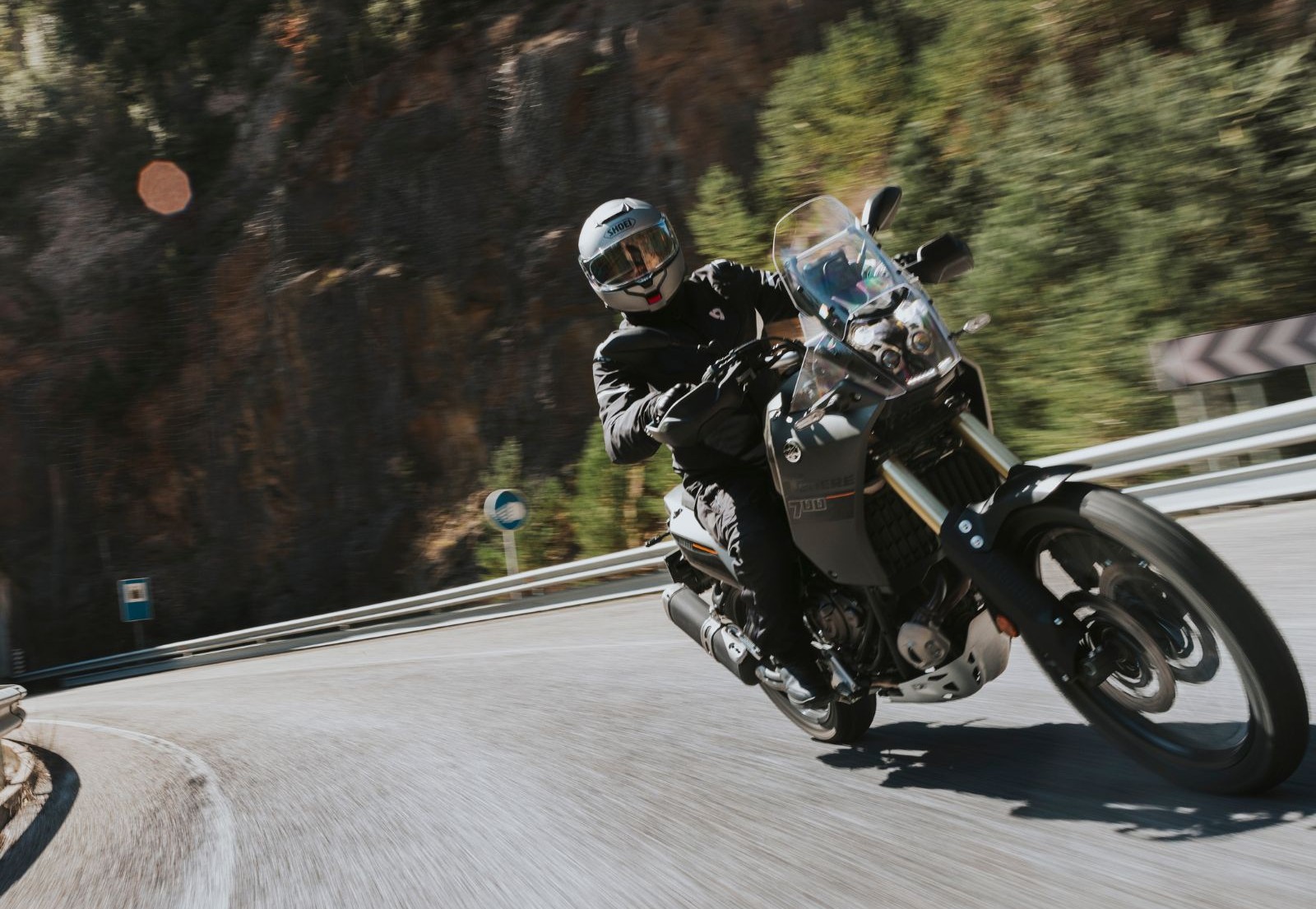
Best Quietest Modular Motorcycle Helmets: Tune Out the Wind, Not the Ride
Discover the quietest modular helmets that turn wind roar into a whisper. Protect your hearing and arrive fresh on every ride.

